Facilities
The Geology Program has a range of facilities available for undergraduate research projects and education.
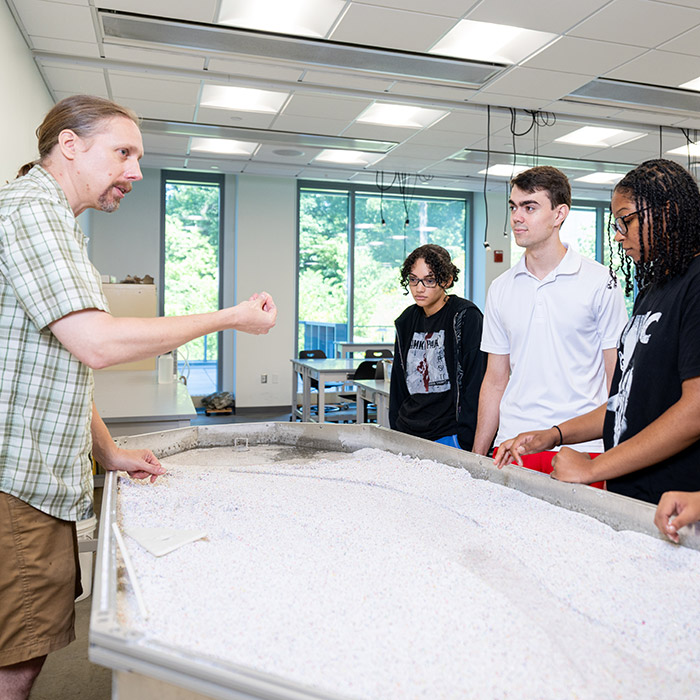
Interactive Classrooms
The Geology classrooms are equipped for hands-educational experiences. We have catalogued mineral and paleontology collections as well as hundreds of rock samples from a variety of geological environments. Additionally, we have flow meters, Brunton and Silva compasses, and Jacobs staffs for use in field exercises. A 10-foot long Emriver stream table and 6 groundwater models allow students to observe and experiment with the effects of water flow above and below the surface in the classroom.
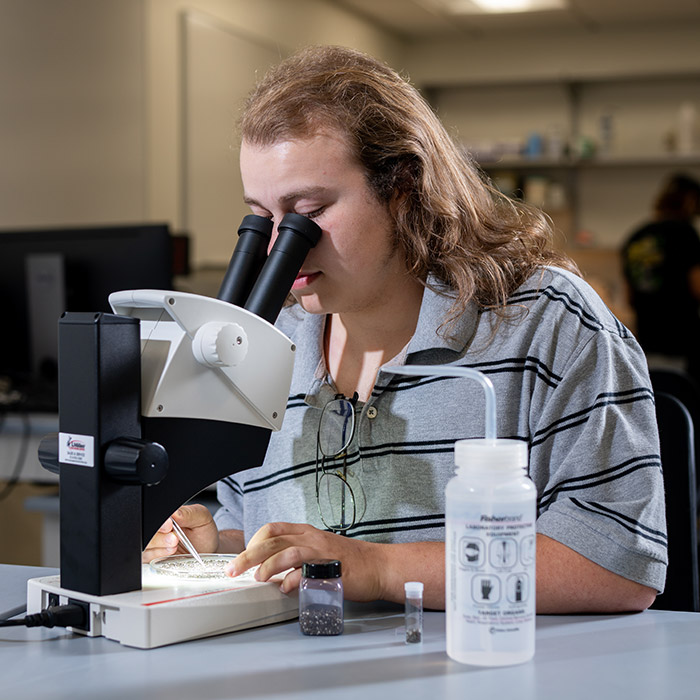
Microscopy Classroom
The Geology program has a room dedicated to teaching students about microscopy. We have 18 stereo microscopes and 18 polarized-light microscopes used to observe a variety of geological specimens. The polarized-light microscopes are equipped with cameras to photograph and share images in real-time with the class.
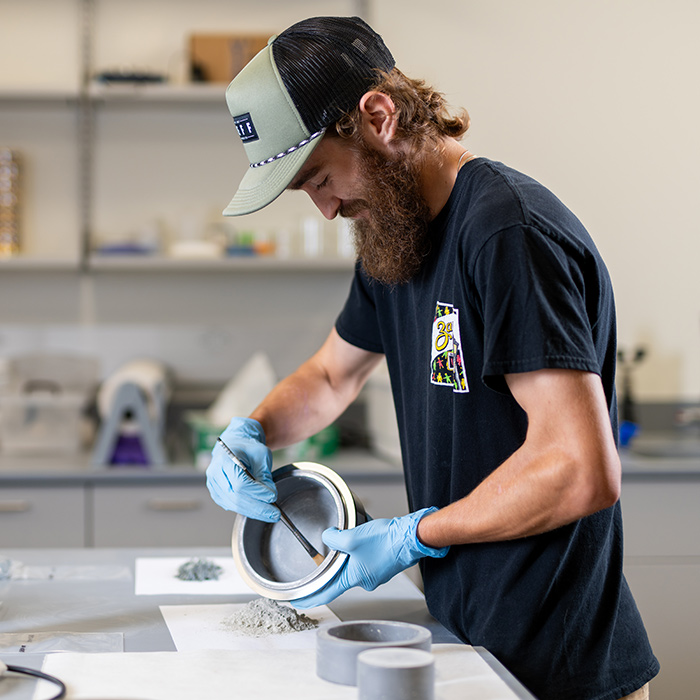
Sample Preparation Facilities
Geological samples often require significant preparation prior to analysis. We have a range of facilities and equipment to prepare paleobiological, water, and rock samples. Those facilities include an MK-101 lapidary saw, two Buehler MiniMet saws, Allied MetPrep polishing wheel, ASC mini-jaw crusher with alumina plates, Spex Shatterbox with tungsten carbide and alumina grinding containers, Retsch automated mortar grinder with alumina and agate containers, high temperature (1050°C) furnace, drying ovens, autotitrator, freeze-dry sample grinder, and welding station to seal borosilicate Carius tubes.
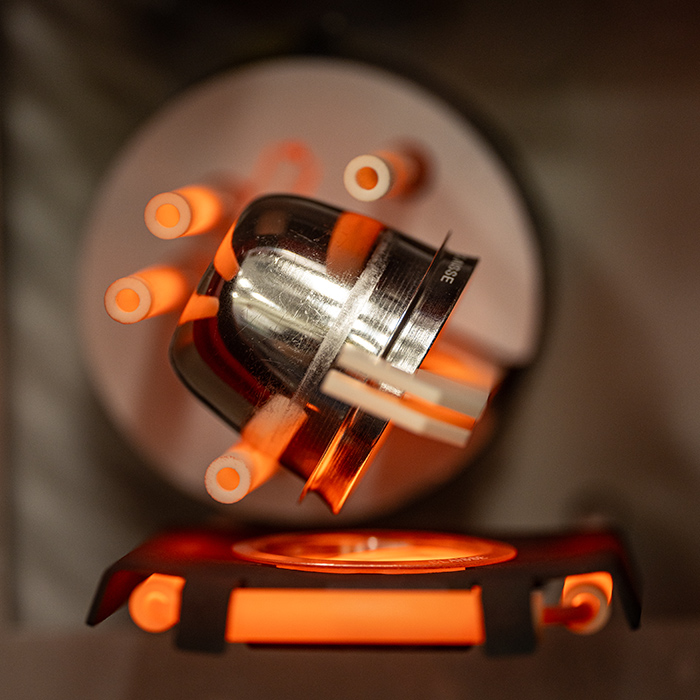
Sample Fusion Center
The Claisse LeNeo automated fluxer is used to fuse geological materials. The molten material can be directly (1) dissolved into acid for analysis or (2) poured into a mold and cooled to form a homogenous glass disc. The glass disc can then be measured for major and trace element compositions.
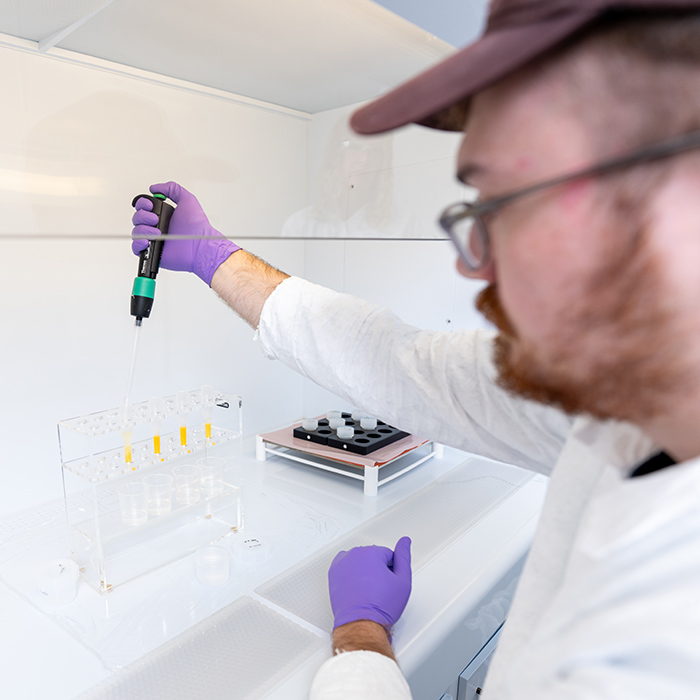
Metal-free Clean Room
A Class 100 metal-free clean room is available for the for extracting trace metals (Ru, Pd, Re, Os, Ir, Pt) in the ppb and ppt range from geological samples. Analytical blanks are minimized by doubly distilling acids using Savillex DST-1000 acid purification systems.
Fluid and Melt Inclusion Laboratory
Minerals trap can house fluids and melts as bubbles inside their structure. During crystallization and cooling, some of those bubbles solidify to glass (melt inclusions) while others remain liquid (fluid inclusions). Melt inclusions are studied using an Olympus BX53 petrographic microscope is fitted with Linkam 1400 High Temperature Stage for equilibrating melt inclusions in minerals. Fluid inclusions are studied using a USGS-type gas-flow heating and freezing stage manufactured by Fluid, Inc.
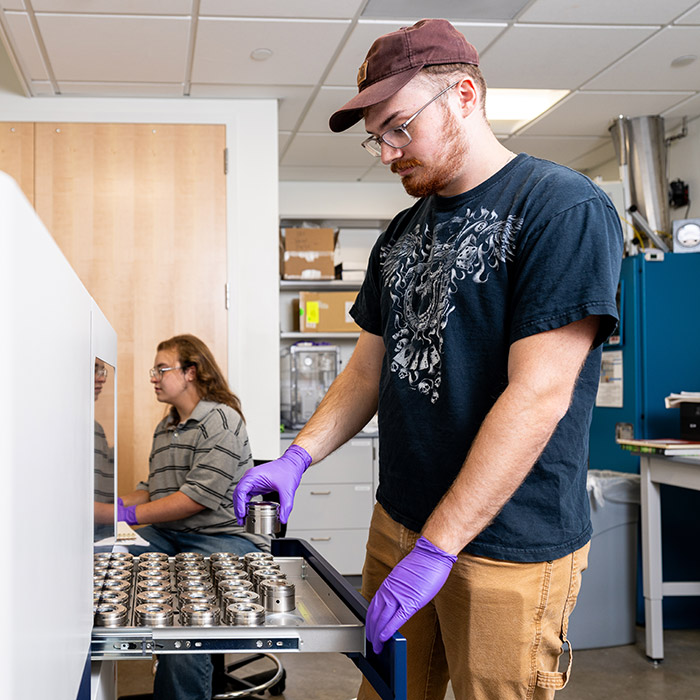
X-ray Fluorescence (XRF)
The Rigaku Primus IV wavelength-dispersive X-ray fluorescence spectrometer (WDS-XRF) measures major and minor elemental concentrations in fused geological materials. It can measure samples in qualitative, semi-quantitative and quantitative modes, depending on the desired precision. We have over 36 geological reference materials that can be used to create precise calibration curves over a wide range of compositions. The instrument has 48 sample holders and can be programed to measure samples unattended. The Primus IV can also generate millimeter-scale compositional maps of flat surfaces.
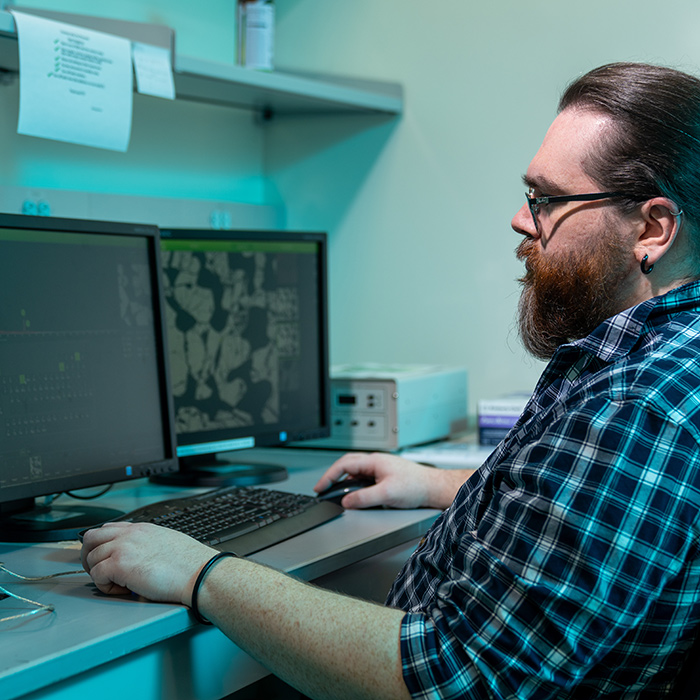
Scanning Electron Microscope (SEM)
The Thermo Scientific Phenom ProX tabletop scanning electron microscope with fully integrated EDS capabilities. This low vacuum tabletop SEM is capable of accelerating voltages between 5kV and 15kV and magnifications up to 130,000x. The low vacuum allows for visualization of uncoated specimens and biologic samples. This SEM also utilizes a digital color navigation camera and automated navigation to regions of interest. The EDS system utilizes a silicon drift detector with detection of elements from B to Am
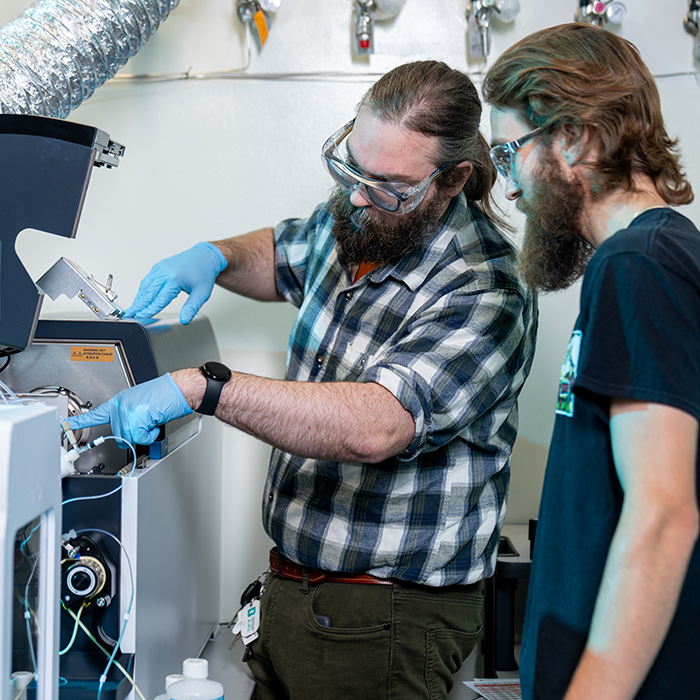
Inductively Coupled Plasma Mass Spectrometer (ICP-MS)
The Agilent 8900 triple quadrupole ICP-MS (ICP-QQQ) measures trace elements in dissolved inorganic samples. It can measure concentrations ranging from parts per million (ppm) to low parts per trillion (ppt). It is equipped with an autosampler for automated measurement of larger batches of samples.
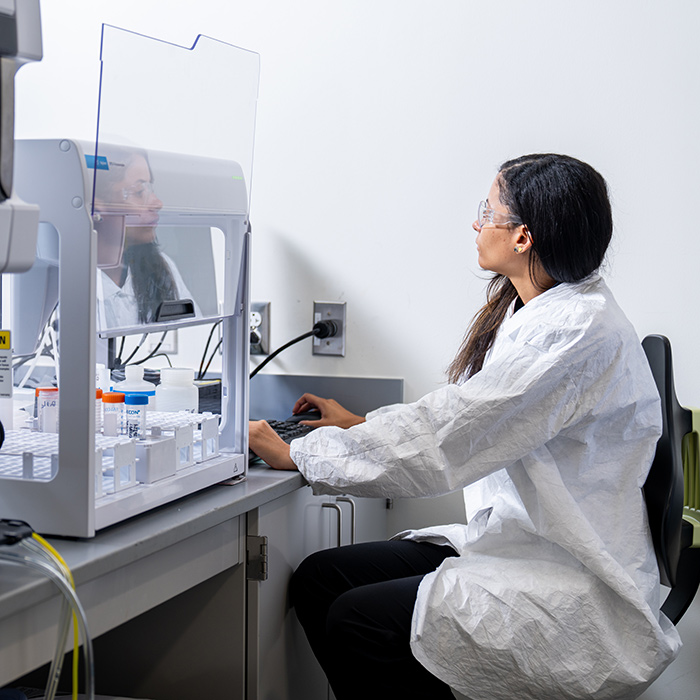
Inductively Coupled Plasma Optical Emission Spectrometer (ICP-OES)
The Agilent 5900 ICP-OES (optical emission spectrometer) measures concentrations of inorganic elements into the part-per-billion (ppb) level as well as isotopic ratios. An auto-sampler allows for unattended operation.
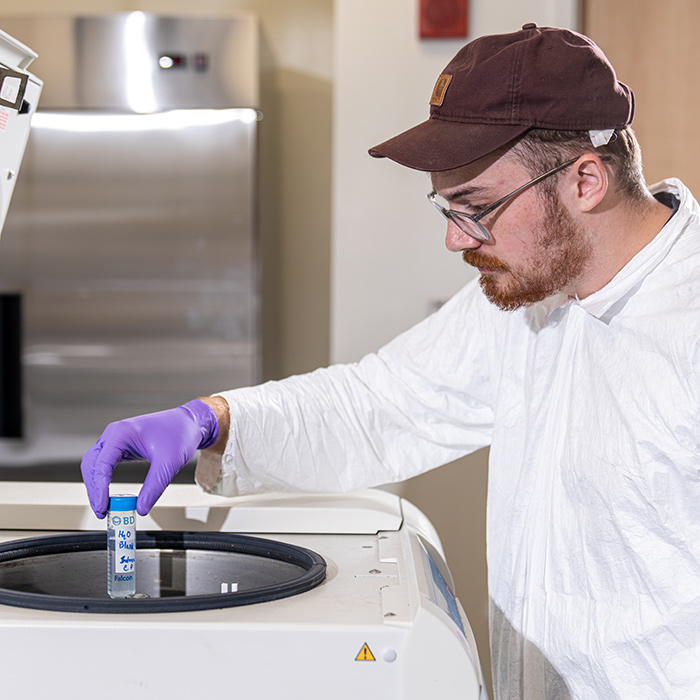
UEBL
Geology faculty are an integral part of the Urban Environmental Biogeochemistry Laboratory (UEBL), which is a collaborative effort between the Departments of Biology, Chemistry, and Physics, Astronomy, and Geosciences, and supports student and faculty research in these departments as well as the Environmental Science Program. It houses a sample intake room, refrigerators and -20°C walk-in freezer for sample storage, a metal-free clean laboratory, and an instrumentation lab. Analytical instrumentation includes: Seal AQ1 Discrete Analyzer; Rigaku Miniflex Tabletop XRD; Thermo ICS-6000 ion chromatograph; Shimadzu TOC-L NC analyzer; Elementar EL Cube CNS Elemental Analyzer; CEM Mars 6 Microwave Digestion System; Beckman-Coulter LS 13 320 XR Particle Size Analyzer; Agilent 5900 ICP-OES and Agilent 8900 triple quadrupole ICP-MS (ICP-QQQ).